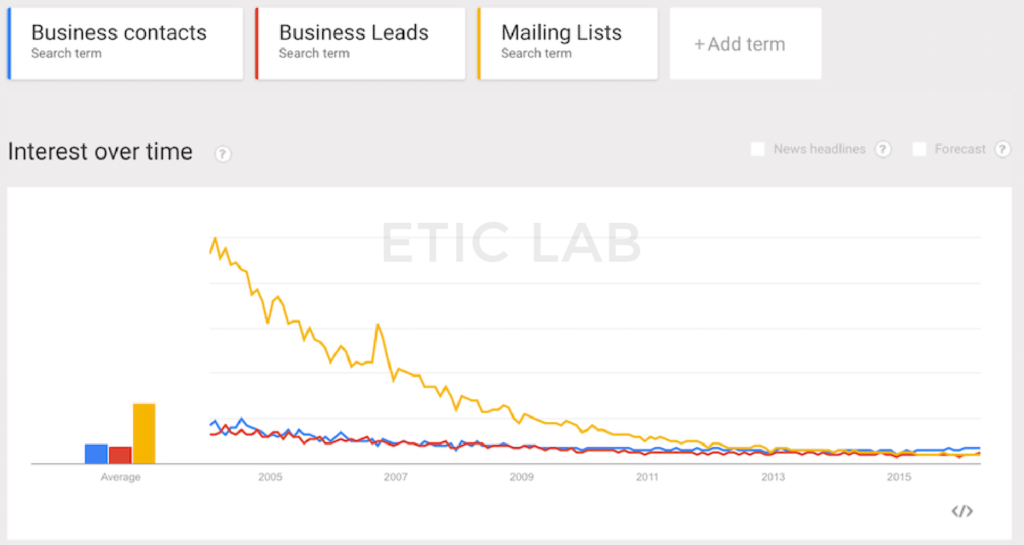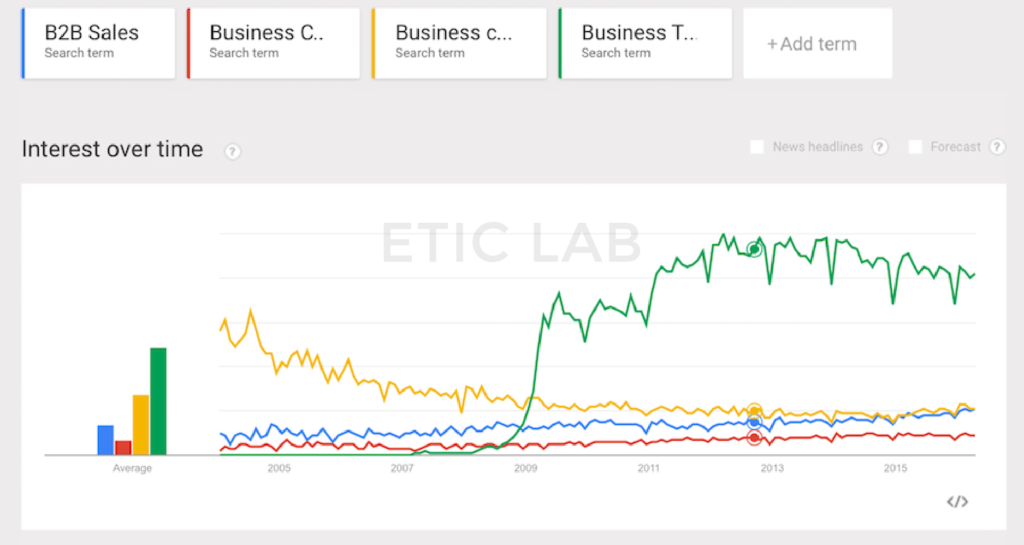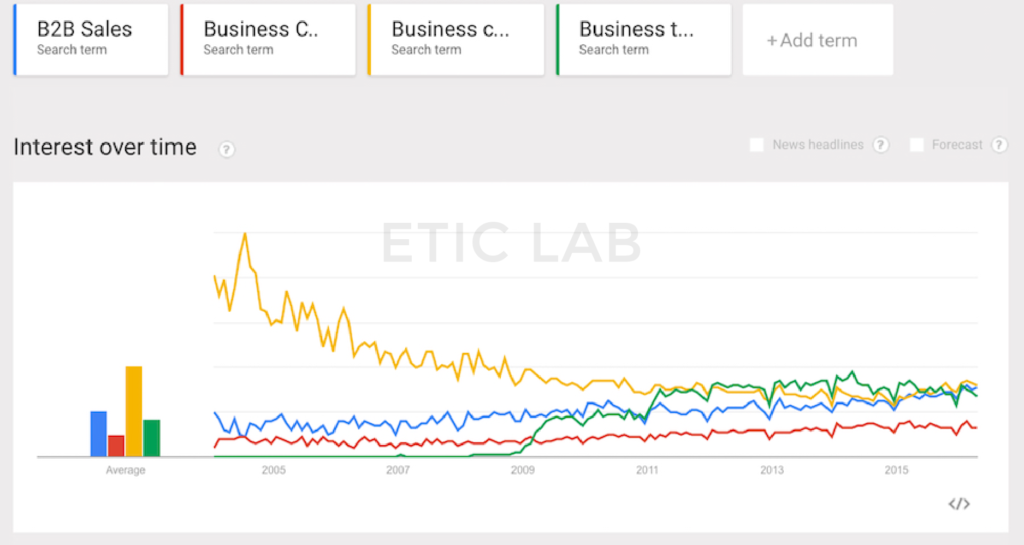Observing trends in Google Search terms to inform B2B marketing strategy.
When we set about researching ways in which to use big data techniques in the arena of B2B Marketing our first task was to find out what was happening. We quickly realised that companies developing and selling data or contact list had been around for a long time, and that established companies in the field had evolved in recent years. Some companies have expanded their offering to include e-mail data in their portfolio, and others had evolved as digital marketing agencies offering email marketing support for example. The very recent increase in the visibility of businesses and brands on social media is apparent, but it is by no means clear how this has impacted upon behaviour in the B2B market. Although a lot of advice can be found on the Internet for marketers looking to exploit social media, it was difficult to establish the impact of social media on this particular industry.
The first and most obvious place to start we thought would be the Google Trends data showing us what it was that businesses had been searching for over time and how things have changed if indeed they have. Our first task was to explore using the Google Analytics tools, the range of queries employed by those looking for B2B data and then to use these terms to develop a picture of change in the industry. Obviously, these data can only be partial, and we must exercise caution in interpreting the results, but they are informative.
The first step was to identify the search terms that have dominated interest in Social media tools and the business community. We found that the following terms gave commensurate volume levels over the last several years; Business Social Media, Facebook for Business and Business Twitter.

Interest in Facebook and Twitter has grown steadily in recent years, and the two lines for Facebook and Twitter are comparable including parallel patterns of change in volume over time. Of course, these terms do not allow us to identify the relevance of these social media platforms for B2B marketing, but they do indicate the salience of these platforms for business.
Our next step was to identify from the large pool of candidates those search terms associated with B2B marketing that had significant volumes and could be used to identify trends over time. After a good deal of experimentation, largely driven by the absence of any absolute volume data in Google Analytics, we were able to identify a pool of search terms that were broadly relevant and produced meaningful volumes and allowed us to identify trends. As can be seen below Contacts Trends, changes in the volume of searches for key terms associated with the B2B industry do indeed have a very strong historical trend.

It is not straying too far from the data to suggest that searches for Business Contacts, Business Leads, and Mailing Lists have declined dramatically in recent years. The fall off in the volume of searches for Business contacts is particularly dramatic.
For interest, we added the trend line for Business Twitter to the analytics for traditional B2B search terms B2B Sales, Business Contacts, and Business contact details:

Business Twitter as a search term is not directly comparable to the most specific terms used to search for contact information, but the historical trend and volumes are surely indicative. It is only reasonable however to include the more specific search terms Business to Business Twitter and see if this does in any way compare with the historical pattern so searches for older forms of B2B communications.
As can be seen from the chart below, Business to Business Twitter has grown to be the largest a single search in this area, showing if nothing else the impact of social media on searches connected to Social Media. In fact, Business to Business Facebook and business to business Twitter searches combined entirely outweigh the volume of searches associated with more traditional terms and hence contact methods in the B2B marketing domain.

Of course, we cannot infer any causal link between the rise of social media as a concern for B2B marketing and the decline in searches for more traditional media. In fact, the decline in the trend from searches using terms such as contact lists entirely predates the massive volumes of searches forFacebook and Twitter in B2B. Rather it is clear that the way in which marketing is using the internet, in general, is impacting these methods and in particular reducing their relative importance in the marketing mix.
What this quick study does demonstrate is the relevance of tools and techniques which can bring data concerning the digital presence of companies into an organised and accessible data stream. Our next task was to identify how these trends make themselves apparent when we examine the digital footprint of companies directly. To do this, we took a very large sample of companies and examined our database of UK company websites to characterise the nature and volume of the information, tools and techniques that they are deploying to present themselves on-line. Our next blog will discuss some of the data arising from this research as we begin to quality the nature of the modern businesses digital footprint.


